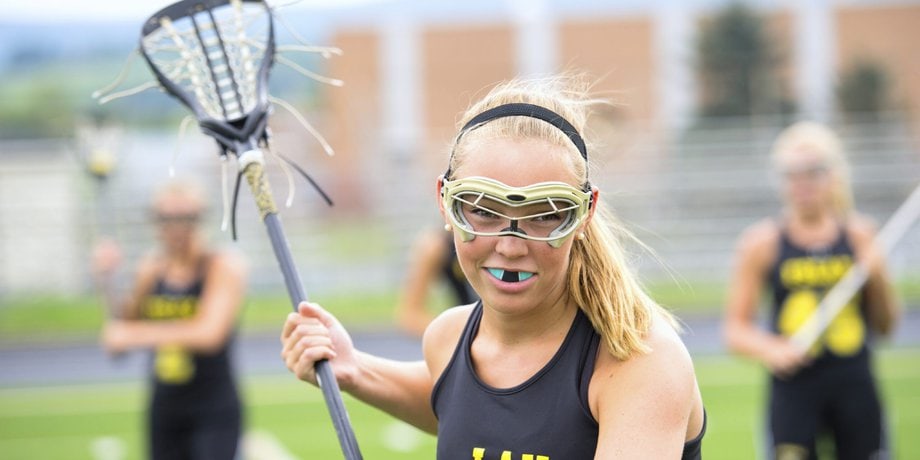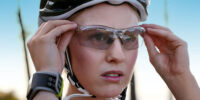How to Choose the Right Eye Protection for Sports

Eye protection is a crucial aspect of sports safety, as it helps prevent potential eye injuries. This article aims to provide an objective and impersonal analysis of the different types of eye protection available for sports enthusiasts.
It will also outline key factors to consider when choosing the most suitable eye protection, along with tips on fitting and adjusting it properly.
Additionally, best practices for maintaining and caring for eye protection will be discussed, ensuring its longevity and effectiveness in safeguarding athletes’ eyes.
Key Takeaways
- Eye protection is crucial in sports to prevent potential eye injuries, which can cause pain, blurred vision, and vision loss.
- Different types of eye protection are available, with lens color and material chosen based on the specific requirements of each sport.
- Factors to consider when choosing eye protection include impact resistance, lens tint, and the speed of objects in the sport.
- Proper fitting and adjustment of eye protection is important for comfort and effectiveness, and maintenance and care should be followed to extend the lifespan of the gear.
The Importance of Eye Protection in Sports
The importance of eye protection in sports lies in its ability to prevent ocular injuries and maintain visual health in athletes.
Eye injuries can have a significant impact on sports performance, as they can cause pain, blurred vision, and even temporary or permanent vision loss. Common eye injuries in sports include corneal abrasions, orbital fractures, and retinal detachments. These injuries can occur due to direct trauma from contact with objects or players, or from the impact of fast-moving projectiles such as balls or pucks.
Prevention measures for eye injuries in sports include wearing appropriate protective eyewear, such as goggles or face shields, that are specifically designed to withstand impact. In addition, athletes should be educated on the importance of eye protection and encouraged to use it consistently to reduce the risk of injury.
Understanding Different Types of Eye Protection
One way to gain a comprehensive understanding of the various types of eye protection available is to familiarize oneself with the different materials and designs employed in their construction.
When it comes to choosing the right lens color for different sports, it is important to consider the specific requirements of each activity. For example, in sports with high levels of glare, such as skiing or water sports, lenses with a darker tint or polarized lenses can be beneficial. On the other hand, for sports that require good contrast and depth perception, like tennis or baseball, lenses with a lighter tint or even clear lenses may be more suitable.
Additionally, understanding the impact resistance of different eye protection materials is crucial to ensure adequate protection from potential hazards. Polycarbonate lenses, for instance, are highly impact-resistant and commonly used in sports eyewear due to their ability to withstand strong impacts without shattering.
Factors to Consider When Choosing Eye Protection for Sports
To make an informed decision regarding suitable eye gear for athletic activities, it is essential to take into account relevant factors.
Two crucial factors to consider are impact resistance and lens tint.
Impact resistance refers to the ability of the eye protection to withstand external forces and protect the eyes from injury. Sports that involve fast-moving objects or potential contact with other players require eye gear with high impact resistance.
Lens tint is another important consideration as it affects visual clarity and comfort. Different sports may require different lens tints to optimize performance. For example, yellow or amber tints can enhance contrast and depth perception in low-light conditions, while dark tints can reduce glare in bright outdoor environments.
Overall, choosing eye protection with appropriate impact resistance and lens tint based on the specific sport and lighting conditions is crucial for optimal safety and performance.
Tips for Properly Fitting and Adjusting Eye Protection
Proper fitting and adjustment of eye gear is crucial to ensure optimal comfort and effectiveness in preventing eye injuries during athletic activities. When choosing eye protection for sports, it is important to consider the size and shape of the individual’s face, as well as the specific requirements of the sport.
Eye gear that is too loose may slip off during activity, while gear that is too tight can cause discomfort and limit peripheral vision. It is recommended to try on different styles and sizes of eye protection to find the best fit. Additionally, adjustable straps and nose pieces can help customize the fit for individual comfort.
Properly fitting and adjusting eye protection not only enhances comfort but also ensures that the gear stays securely in place, providing the necessary protection against potential eye injuries.
Best Practices for Maintaining and Caring for Your Eye Protection
When maintaining and caring for eye protection, it is important to adhere to recommended guidelines for cleaning and storage to ensure the longevity and effectiveness of the gear.
Cleaning techniques for eye protection vary depending on the type of equipment and the materials used. It is a common misconception that regular cleaning with household cleaners or alcohol-based solutions is sufficient. However, these harsh chemicals can damage the lenses and frames, compromising the protective properties of the gear. Instead, it is recommended to use mild soap and water or specialized lens cleaners specifically designed for eyewear.
Proper storage is crucial to prevent scratches and damage. Storing eye protection in a protective case when not in use can help maintain the integrity of the lenses and frames, extending the lifespan of the gear.
Frequently Asked Questions
Can I Wear Regular Eyeglasses as Eye Protection During Sports Activities?
Wearing regular eyeglasses during sports activities may have negative effects on sports performance due to factors such as discomfort, reduced peripheral vision, and increased risk of injury. Specialized sports eyewear is more suitable for effective eye protection.
Are There Any Specific Sports Where Eye Protection Is Not Necessary?
Sports that involve minimal physical contact and have a low risk of eye injuries, such as swimming or running, may not require the use of eye protection. However, it is important to note that in most sports, eye protection is recommended to prevent potential injuries.
How Often Should I Replace My Eye Protection for Optimal Safety?
To ensure optimal safety, it is important to regularly replace eye protection. The specific frequency depends on factors such as the type of eye protection, frequency of use, and any visible signs of wear and tear. Additionally, proper maintenance and cleaning of eye protection is essential for its longevity and effectiveness.
Can Wearing Eye Protection Hinder My Performance or Vision During Sports?
The impact of different types of eye protection on sports performance and potential drawbacks of wearing eye protection during sports activities are significant factors to consider when choosing eye protection.
Are There Any Alternative Methods for Protecting My Eyes During Sports, Apart From Using Eye Protection?
Alternative methods for protecting the eyes during sports exist, apart from using eye protection. These methods have their own benefits and drawbacks, and should be considered based on the specific sport and individual preferences.







